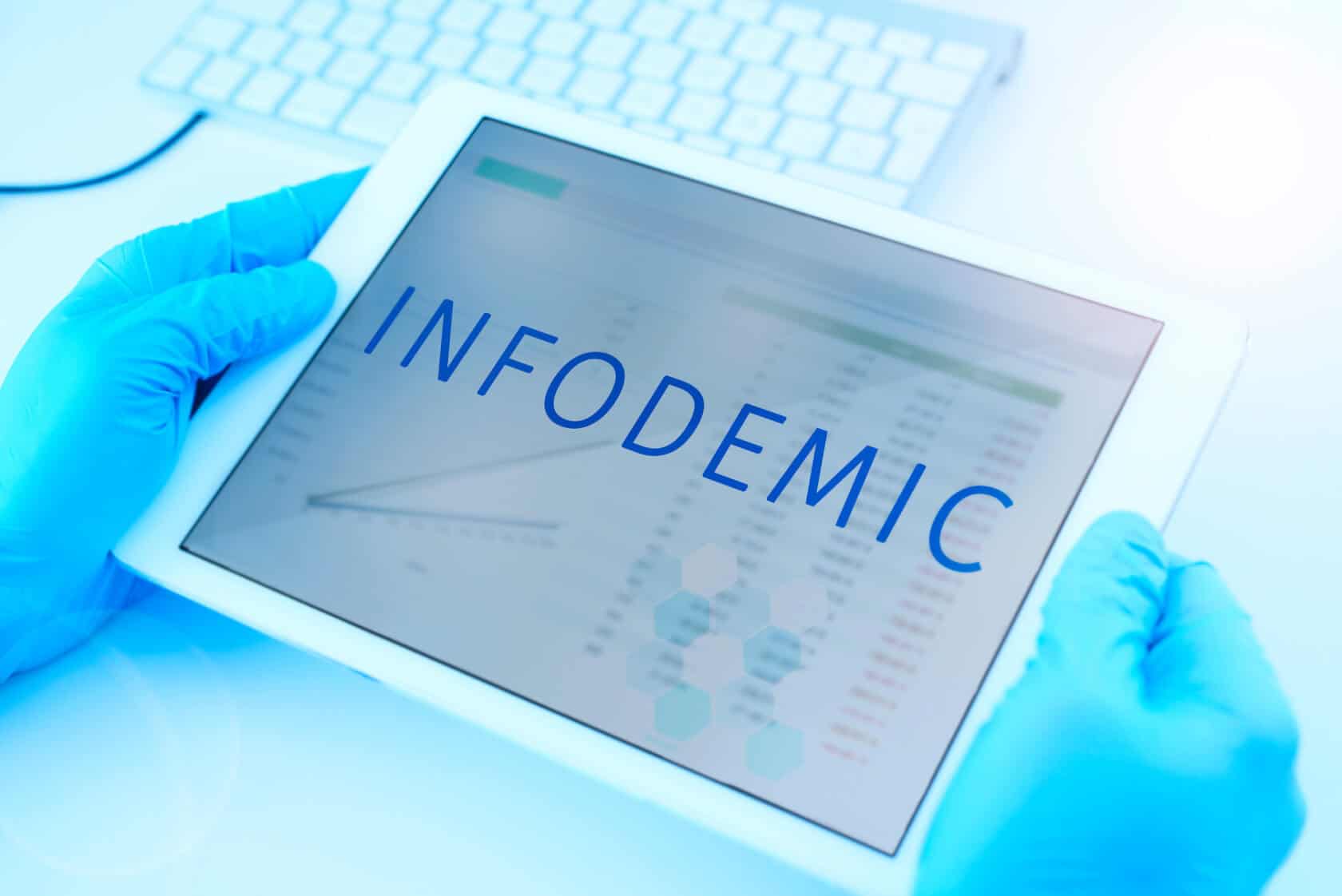Users seek the information they like the most or feel more comfortable and ignore dissenting information. Certainly, fact-checking or debunking might even backfire. In this light, it is clear that the simple dichotomy between lies and truth is a matter of narratives since the concept of truth may differ among social groups.
We may all agree the spread of the COVID-19 pandemic brought enormous challenges.
Naturally, this was followed by societies’ attempts to better address the obstacles for which we knew little to nothing about.
Unless you were somehow completely isolated from the online world and news, you know that one of the most common things we noticed during this time is the spread of the news and information on social media platforms about the issues surrounding the pandemic.
This phenomenon is described by the term “infodemic”.
A recent paper on this phenomenon is Infodemics: A new challenge for public health on CELL written by world-leading scientists, people from World Health Organisations and CDCs worldwide.
The term “infodemic”, the paper explains, was first coined in 2003 to describe the amplification of news about the SARS outbreak that new information technologies had made possible. It has also come to mean the rapid spread of misinformation that happens through social media platforms and other outlets.
Recognizing that the study of infodemics is relatively new, the paper discusses unresolved issues and proposes research directions to enhance preparedness for future health crises.

Youth Time speaks exclusively to one of its co-authors, Walter Quattrociocchi, Ph.D., Associate Professor, Data Science and Complexity, Sapienza Università di Roma, who in this piece elaborates more on how a complete understanding of the infodemics and epidemics would allow us to solve the challenges they pose.
Among other things, he also shares a few tips on how we can all be more digitally aware and also comments on how the comparison of infodemics to pandemics might actually be keeping us from fighting them effectively.
Infodemic: What it is and What Should We Know
Initially Quattrociocchi comments on the definition itself, its changing nature and also how the COVID-19 highlights the importance of information distribution during health emergencies.
He recalls there is an important debate within the scientific community regarding the impact of information on human behaviour.
Indeed, “Fake News” is one of the most used buzz-words nowadays; he notes.
“In the past, together with my group, we outlined it is not a problem of false information versus truth, but a combined effect of human attitudes and the new information ecosystem dominated by social media.”
In truth, Quattrociocchi highlights, we know that confirmation bias dominates online content consumption.
“Users seek the information they like the most or feel more comfortable and ignore dissenting information. Certainly, fact-checking or debunking might even backfire. In this light, it is clear that the simple dichotomy between lies and truth is a matter of narratives since the concept of truth may differ among social groups.”
A Proper Understanding of Infodemics and Pandemics
While I was reading the paper, one thing that caught my eye is that it suggests the comparison of infodemics to pandemics might actually keep us from fighting them.
On this note, Quattrociocchi emphasises the beginning of the COVID-19 pandemic and the importance of being aware of the characteristics of the online world.
“When COVID-19 appeared in our life, it was the time to try to provide a better framing of the fake news problem since it is essential to have a clean information ecosystem when dealing with a global pandemic but to understand this vast sea of information, we need to know the main drivers to prevent its storms.”
Although, he acknowledges; We cannot treat information like a virus as they follow different dynamics.
“Everything starts from the optionality with which we can acquire information, and such optionality does not hold for viruses. Assuming information like a virus is misleading and provides wrong mathematical models to deal with the infodemic.”, he further explains.
In his words, unlike with a virus, we can decide to accept or not to accept information.
Commenting on this, he gives us a few tips on how we can all play a constructive role during such a global crisis and not worsen them by reading/spreading unverified information online. Even if we sometimes do this unconsciously.
“To contrast misinformation diffusion, the only way I see is to make people aware of the mechanism that characterizes our online interaction (confirmation bias, polarization, echo chambers, etc.).”
He further draws our attention that just providing strategies to verify the sources is not sufficient.
“Argue with all the ones that try to oversimplify the problem by reducing it just to a problem of ignorance or false/truth. This is a new information environment, and everyone has to be aware of terms like “echo chambers,” “confirmation bias,” and “polarization.”
As the paper’s conclusions proclaim, in global pandemics, information shapes perceptions and may influence choices and, thus, policy design and social response. To enforce an improved epidemics surveillance, the paper additionally calls, we should consider the contemporary presence of infodemics and epidemics dimensions, accounting for their singular and shared features.
Quattrociocchi believes that knowing we are a part of this information environment might give us some fresh air.
And we here at Youth Time are keeping you updated on this matter. Below you can find a piece treating digital awareness as a crucial trait to possess in today’s world:
Photo: Shutterstock.com
Another great article here:
Support us!
All your donations will be used to pay the magazine’s journalists and to support the ongoing costs of maintaining the site.
Share this post
Interested in co-operating with us?
We are open to co-operation from writers and businesses alike. You can reach us on our email at [email protected]/[email protected] and we will get back to you as quick as we can.










